
Roots
The journey into hair color, for those with textured strands, often begins with a quiet question whispered in the mirror ❉ What path offers vibrant hues without compromising the delicate vitality of our coils, curls, and waves? It is a question born from generations of understanding that hair, particularly textured hair, holds not only aesthetic value but also stories, heritage, and an intimate connection to self. This exploration invites us to delve into the very foundations of hair coloring, comparing the ancestral wisdom held within natural dyes with the modern science of synthetic formulations, all through the unique lens of textured hair.

Hair Anatomy Specific to Textured Hair
The architecture of textured hair, with its distinct elliptical cross-section and varied curl patterns, plays a profound role in how color behaves. Unlike straight hair, which typically possesses a rounder cross-section, the hair shaft of curly and coily hair is more elliptical, and the follicle itself is more curved. This curvature contributes to a greater number of disulfide bonds within the hair fiber, resulting in more pronounced curls. The outermost layer, the Cuticle, comprises overlapping, tile-like cells, which act as a protective barrier.
In textured hair, these cuticle scales can be more raised or irregular, influencing how easily moisture enters and exits, a characteristic known as porosity. This inherent structural difference means that the interaction of dye molecules, whether natural or synthetic, with the hair shaft is uniquely calibrated for textured strands.
Understanding the hair’s internal structure, the Cortex, is also vital. This is the primary region where pigment, or melanin, resides. Permanent dyes aim to penetrate this core, altering its natural color, while many natural dyes tend to coat the external cuticle layers.
The medulla, the innermost layer, may or may not be present depending on hair thickness, and contributes to hair volume, strength, and elasticity. The health and integrity of these layers dictate how well color takes, how long it lasts, and the potential for damage.

Textured Hair Classification Systems and Dye Absorption
While classification systems, such as the Andre Walker system (types 1-4, with sub-classifications a, b, c), provide a framework for describing curl patterns, their true value in the context of hair dyeing lies in their indirect relationship to Porosity. Textured hair, particularly Type 3 curly and Type 4 coily hair, often exhibits higher porosity due to its raised cuticle layers, whether naturally or from previous chemical treatments. This heightened porosity means the hair can absorb moisture and products quickly, but it also loses them just as fast, leading to dryness and potential color fading. Low porosity hair, conversely, has tightly bound cuticles, making it difficult for moisture and products to penetrate, yet once absorbed, moisture is retained effectively.
The porosity of textured hair directly impacts how dye molecules interact with the hair shaft:
- High Porosity Hair ❉ Absorbs dye rapidly, potentially leading to darker or duller results if not managed, and can experience faster color fade due to the open cuticles allowing pigment molecules to escape.
- Low Porosity Hair ❉ Resists initial dye penetration, often requiring more processing time or heat to open the cuticle, but once the color is in, it tends to hold onto it longer.
- Normal Porosity Hair ❉ Generally offers a balanced uptake and retention of color, reflecting a healthy cuticle layer.
Knowing one’s hair porosity becomes a compass in navigating the world of hair dyes, guiding choices toward formulations that respect the hair’s unique absorption and retention capabilities.
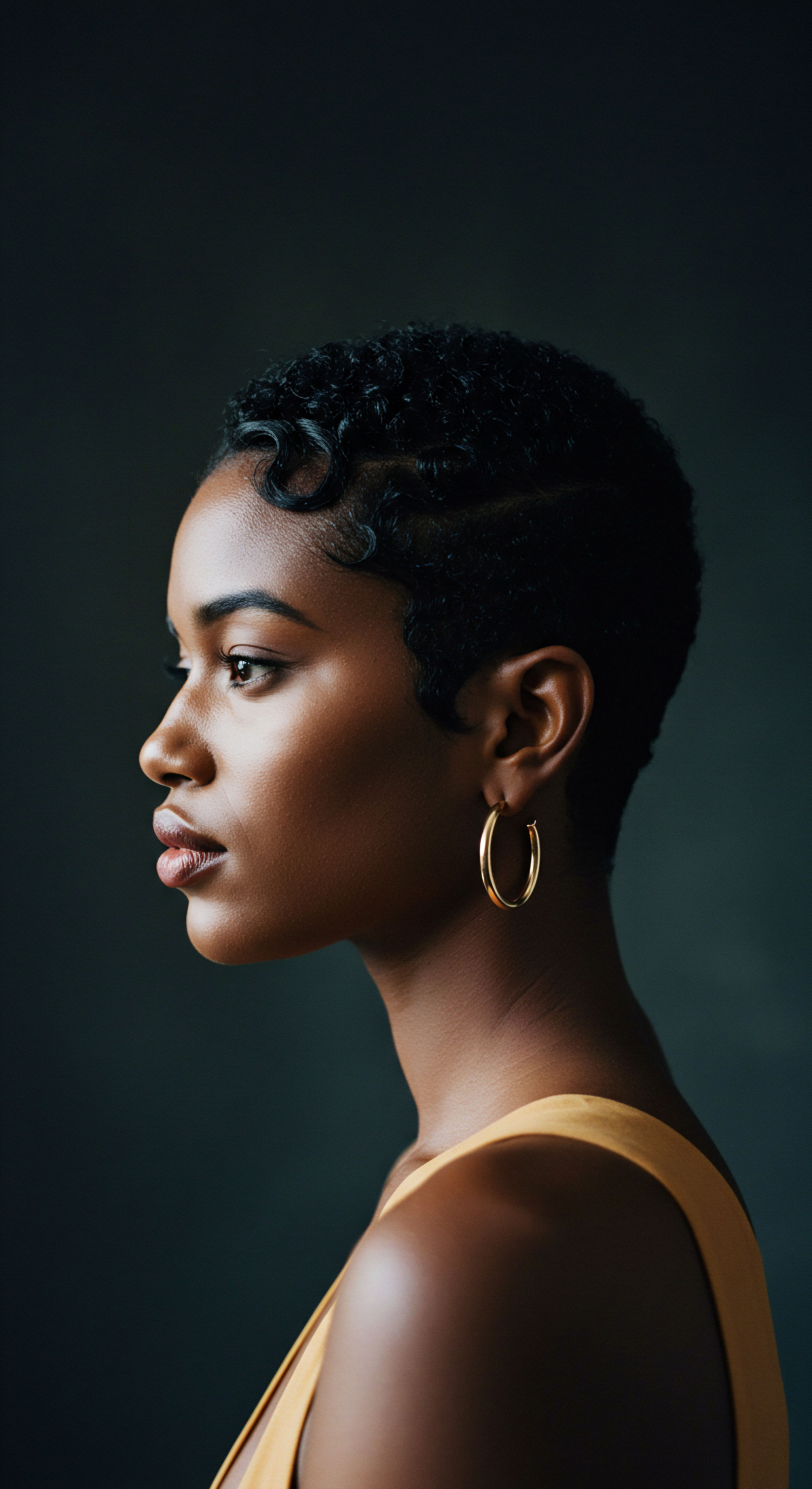
The Essential Lexicon of Textured Hair Coloring
A shared understanding of terms is essential when discussing hair color for textured strands. These words are not merely labels; they are keys to unlocking appropriate care and managing expectations.
- Cuticle ❉ The outermost protective layer of the hair shaft, composed of overlapping cells. Its state (open, closed, damaged) profoundly influences dye uptake and retention.
- Cortex ❉ The inner, main body of the hair, where melanin (natural pigment) is located. Permanent dyes chemically alter the melanin within this layer.
- Porosity ❉ The hair’s ability to absorb and retain moisture. High porosity hair has more open cuticles, low porosity has tightly closed ones.
- Lawsone ❉ The active dye molecule in henna, which binds to the keratin protein in hair, imparting a reddish-orange pigment.
- PPD (Para-Phenylenediamine) ❉ A common chemical in synthetic permanent dyes, known for its ability to create long-lasting color but also for potential allergic reactions and irritation.
This vocabulary helps frame conversations about hair health, color longevity, and ingredient safety, particularly for individuals navigating the specific needs of textured hair.

Hair Growth Cycles and Influencing Factors
Hair growth occurs in cycles ❉ the active growth phase (anagen), a transitional phase (catagen), and a resting phase (telogen). The duration of these phases varies, but understanding them helps in predicting regrowth lines and planning dye applications. For textured hair, which often grows at a slower rate and may experience significant shrinkage, regrowth can become apparent quickly, necessitating more frequent root touch-ups if a stark contrast is present.
Factors like genetics, nutrition, stress, and overall health also influence hair growth and its condition, which in turn affects how hair responds to coloring. A healthy scalp and robust hair shaft are always more receptive to dye and more resilient to its effects, regardless of the formulation chosen.
Understanding the unique architecture of textured hair, particularly its cuticle structure and porosity, is foundational to comprehending how different dyes interact with it.

Ritual
Stepping into the practice of coloring textured hair calls for a blend of reverence for its unique characteristics and a practical understanding of how various dyes perform. It is a thoughtful process, where the hands-on application becomes a deliberate act of care, guided by the hair’s inherent needs. This section shifts our gaze from the underlying science to the tangible acts of coloring, exploring the preparation, application, and subsequent nurturing that define a successful dyeing experience for textured strands.

Natural Dye Preparation and Application
Natural hair dyes, often derived from plants and minerals, offer a gentler approach to altering hair color. Henna (Lawsonia inermis) is perhaps the most widely recognized, imparting rich red to auburn tones. Its dye molecule, lawsone, binds to the keratin protein in the hair shaft, creating a permanent color that coats the strands rather than penetrating the cortex as deeply as synthetic dyes.
Indigo, often used in conjunction with henna, layers a blue pigment over the red base to achieve brown or black shades. Other natural options include cassia, walnut shells, and chamomile, each offering a different hue and interaction with the hair.
The preparation of natural dyes typically involves mixing powdered plant material with water or acidic liquids (like lemon juice or tea) and allowing it to sit for several hours for dye release. The resulting paste is then applied to the hair. Unlike synthetic dyes, which often have a strong chemical odor, natural dyes possess an earthy, botanical scent. Their application can be more time-consuming, and the color development may take longer, often several hours, and the final shade can be influenced by the hair’s natural color and porosity.
| Characteristic Primary Action |
| Natural Dyes (e.g. Henna) Coats hair shaft, binds to keratin |
| Synthetic Dyes (Permanent) Penetrates cortex, chemically alters melanin |
| Characteristic Key Chemicals |
| Natural Dyes (e.g. Henna) Lawsone (henna), plant pigments |
| Synthetic Dyes (Permanent) Ammonia, peroxide, PPD |
| Characteristic Cuticle Interaction |
| Natural Dyes (e.g. Henna) Generally less disruptive, acidic pH can close cuticles |
| Synthetic Dyes (Permanent) Opens cuticle to allow penetration |
| Characteristic Color Range |
| Natural Dyes (e.g. Henna) Limited, earthy tones (reds, browns, blacks, some blondes) |
| Synthetic Dyes (Permanent) Wide spectrum, vibrant and customizable |
| Characteristic Longevity |
| Natural Dyes (e.g. Henna) Permanent adhesion (henna), can fade for others |
| Synthetic Dyes (Permanent) Permanent (oxidative), semi-permanent, temporary |
| Characteristic Health Impact |
| Natural Dyes (e.g. Henna) Lower risk of irritation/allergies, conditioning benefits |
| Synthetic Dyes (Permanent) Potential for irritation, allergic reactions, damage |
| Characteristic Environmental Impact |
| Natural Dyes (e.g. Henna) Biodegradable, lower ecological footprint |
| Synthetic Dyes (Permanent) Chemical runoff, pollution, fossil fuel reliance |

Synthetic Dye Application Nuances for Textured Hair
Synthetic hair dyes, encompassing permanent, demi-permanent, and semi-permanent options, offer a vast palette of colors and predictable results. Permanent dyes utilize an alkaline agent, typically Ammonia, to open the hair’s cuticle, allowing smaller dye precursors to penetrate the cortex. Hydrogen peroxide then acts as an oxidizing agent, lightening the natural pigment and facilitating the formation of larger color molecules within the hair shaft, which become trapped. This process fundamentally changes the hair’s internal structure to alter its color.
For textured hair, the application of synthetic dyes demands particular attention. The inherent dryness and porosity variations in textured strands mean they can react differently to the chemical processes. High porosity hair may absorb color too quickly, leading to uneven or overly dark results, while low porosity hair might resist penetration, requiring longer processing times or gentle heat.
The potential for damage, including dryness and breakage, is heightened with repeated chemical treatments, especially those involving ammonia and peroxide. Careful sectioning, even saturation, and precise timing are crucial to achieving desired results while minimizing stress on the hair.
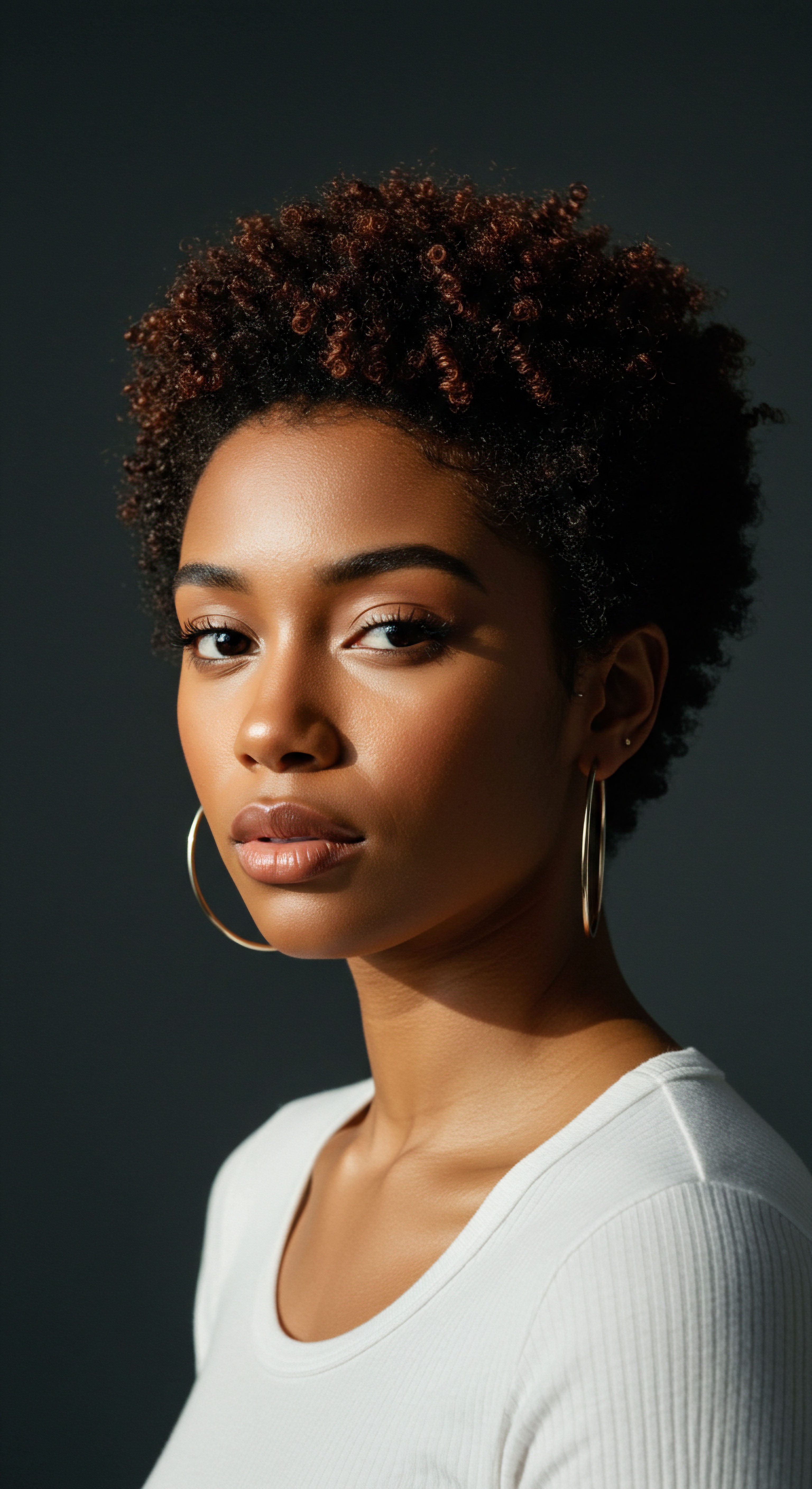
Pre-Dye Preparations for Textured Strands
Preparing textured hair for any coloring process is a thoughtful endeavor, aiming to optimize dye uptake and safeguard hair health. This involves addressing moisture levels, protein balance, and cuticle integrity.
- Porosity Assessment ❉ Understanding your hair’s porosity is the first step. A simple strand test—placing a clean hair strand in water to observe if it sinks (high porosity), floats (low porosity), or hovers (normal porosity)—provides guidance for pre-treatment and application strategies.
- Moisture Balance ❉ Textured hair often leans towards dryness. Deep conditioning treatments in the days leading up to coloring can infuse much-needed moisture, creating a more resilient canvas. Well-hydrated hair responds better to dye and is less prone to damage.
- Clarification ❉ A gentle clarifying wash a few days before coloring can remove product buildup, ensuring an even application and better dye adherence, without stripping the hair excessively.
- Protein Treatments (as Needed) ❉ For highly porous or damaged textured hair, a light protein treatment can temporarily reinforce the hair’s structure, making it less susceptible to over-absorption and breakage. However, caution is advised for low porosity hair, which can be sensitive to protein buildup.
These preparatory steps, when carefully considered, contribute significantly to a more harmonious coloring experience and a healthier outcome for textured hair.

What Are the Key Considerations for Post-Dye Care and Longevity for Textured Hair?
The care journey does not conclude once the color is applied; rather, it enters a new phase of preservation. For textured hair, maintaining vibrancy and health post-dye requires a tailored approach to sealing the cuticle and retaining moisture. The open nature of textured hair cuticles, particularly in higher porosity strands, means color molecules can escape more readily, leading to faster fading.
Post-coloring, using cool or lukewarm water for rinsing helps to seal the cuticle, locking in the color pigment. Sulfate-free shampoos and conditioners are paramount, as sulfates can strip color and natural oils, exacerbating dryness in textured hair. Leave-in conditioners and moisturizing creams are essential to replenish hydration, maintaining the hair’s elasticity and sheen. Regular deep conditioning treatments become a cornerstone of the regimen, providing the intense moisture textured hair craves after any chemical process.
Limiting heat styling and using heat protectants when necessary further safeguards the color and the hair’s structural integrity. The goal is to create an environment where the hair is continually nourished, allowing the chosen hue to reside vibrantly within its coils and curls for as long as possible.
The deliberate choices made in preparing and caring for textured hair before and after coloring are as vital as the dye itself, influencing both the color’s vibrancy and the hair’s continued well-being.
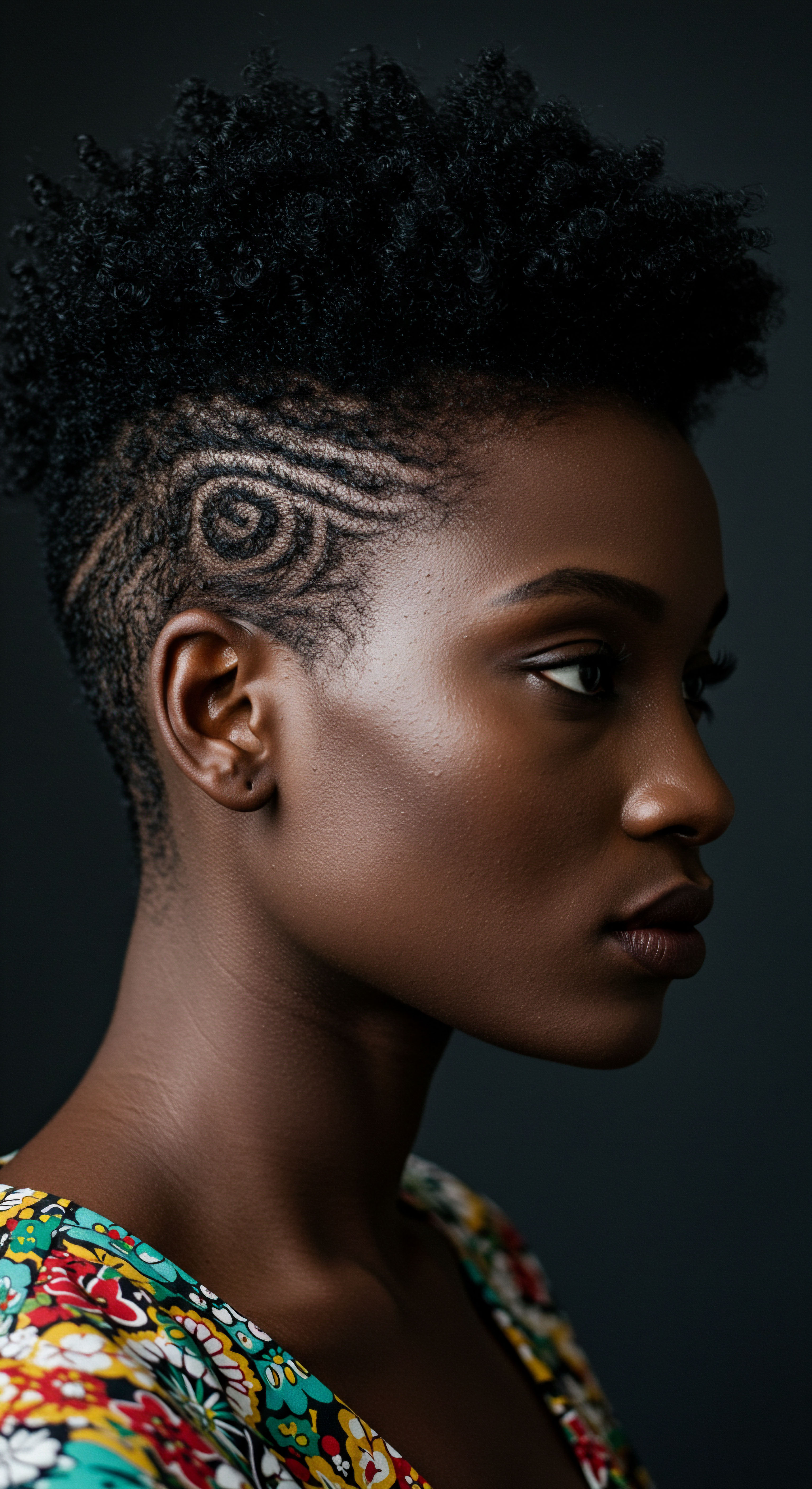
Relay
As we move deeper into the realm of hair coloring for textured strands, a more intricate interplay of scientific principles, cultural narratives, and ethical considerations unfolds. This section invites a contemplative exploration, probing the less apparent complexities that lie beneath the surface of a simple color choice. It is here that we truly connect the molecular dance of dyes with the profound stories held within each coil and curl, recognizing that every decision about hair color resonates with layers of meaning.

The Chemistry of Color on Textured Hair
The distinct morphology of textured hair influences its chemical reactions with dyes at a fundamental level. Permanent synthetic dyes, with their alkaline agents like ammonia, aim to swell and lift the cuticle layers, allowing smaller dye precursors to infiltrate the Cortex, the hair’s innermost pigmented region. Once inside, these precursors react with hydrogen peroxide, an oxidizing agent, to form larger, colored molecules that become trapped within the hair shaft.
This oxidative process effectively alters the hair’s natural melanin, providing a wide spectrum of shades and lasting results. However, this chemical alteration can lead to a loss of hair’s natural oils and proteins, potentially resulting in dryness and increased fragility, particularly for already delicate textured hair.
Natural dyes, in contrast, operate through a different mechanism. Henna’s lawsone molecule, for instance, forms a covalent bond with the keratin protein of the hair, coating the outer cuticle layers rather than deeply penetrating the cortex. This external deposition is generally gentler on the hair’s structural integrity, contributing to conditioning benefits and shine.
While natural dyes may not offer the same dramatic lightening or extensive color range as synthetic options, their interaction with the hair’s surface can be seen as a less invasive form of coloration, preserving the hair’s inherent moisture and protein balance more effectively. The choice between these chemical approaches thus becomes a dialogue between desired aesthetic and long-term hair health.

How Do Cultural Traditions Influence Modern Hair Dye Choices for Textured Hair?
Hair, particularly within Black and Afro-descendant communities, has always served as a profound marker of identity, status, and expression. From ancient African societies where intricate hairstyles conveyed tribal affiliation, marital status, or social rank, to the forced shaving of heads during the transatlantic slave trade as a means of dehumanization, hair has carried immense cultural weight. This deep historical connection means that choices around hair color are rarely purely aesthetic; they are often imbued with personal and collective narratives.
In contemporary contexts, the decision to dye textured hair can be seen through multiple cultural lenses. For some, it is an act of reclaiming autonomy and self-expression, a vibrant celebration of individuality that builds upon a history of hair as a medium for communication and resistance. For others, particularly those navigating the legacy of assimilation pressures, the choice of color or dye type might subtly reflect ongoing dialogues about beauty standards. The natural hair movement, for example, which champions the acceptance and celebration of Afro-textured hair in its unaltered state, has also opened avenues for exploring natural color alternatives that align with a holistic wellness philosophy.
The resurgence of plant-based dyes can be viewed as a return to ancestral practices, honoring traditional methods of adornment that predate the advent of harsh chemical treatments. This cultural resonance adds a layer of significance to the comparative discussion of natural versus synthetic dyes, transforming a chemical decision into a personal statement of heritage and identity.
The long-term impact of hair dyeing extends beyond immediate color, influencing hair health, environmental considerations, and deeply held cultural identities.

Environmental and Ethical Considerations of Hair Coloring
The pursuit of vibrant hair color carries an environmental footprint, a reality often overlooked in the immediate gratification of a new shade. Synthetic hair dyes, particularly permanent formulations, contribute to environmental concerns throughout their lifecycle. Their production involves energy-intensive processes and relies on petrochemicals, leading to carbon emissions. The ingredients themselves, such as P-Phenylenediamine (PPD), ammonia, and resorcinol, can become pollutants when rinsed down drains, potentially contaminating water systems and harming aquatic life.
A 2019 Sierra Club report highlighted that 1.43 billion units of hair dye are sold in the United States annually, with 75% of women using dye, contributing significantly to waste streams. This mass consumption underscores the scale of the environmental challenge.
Natural dyes, by contrast, generally boast a lower ecological footprint. Derived from plant materials, they are often biodegradable and free from the harsh chemicals associated with synthetic formulations. Their production typically involves less energy and fewer harmful byproducts. Ethical sourcing of these botanical ingredients also plays a role, with some brands prioritizing fair trade practices and sustainable agriculture.
Choosing natural dyes can therefore be a conscious step towards reducing one’s environmental impact, aligning beauty practices with broader ecological responsibility. This shift reflects a growing consumer awareness, prompting a reevaluation of beauty industry practices and their wider implications for the planet.
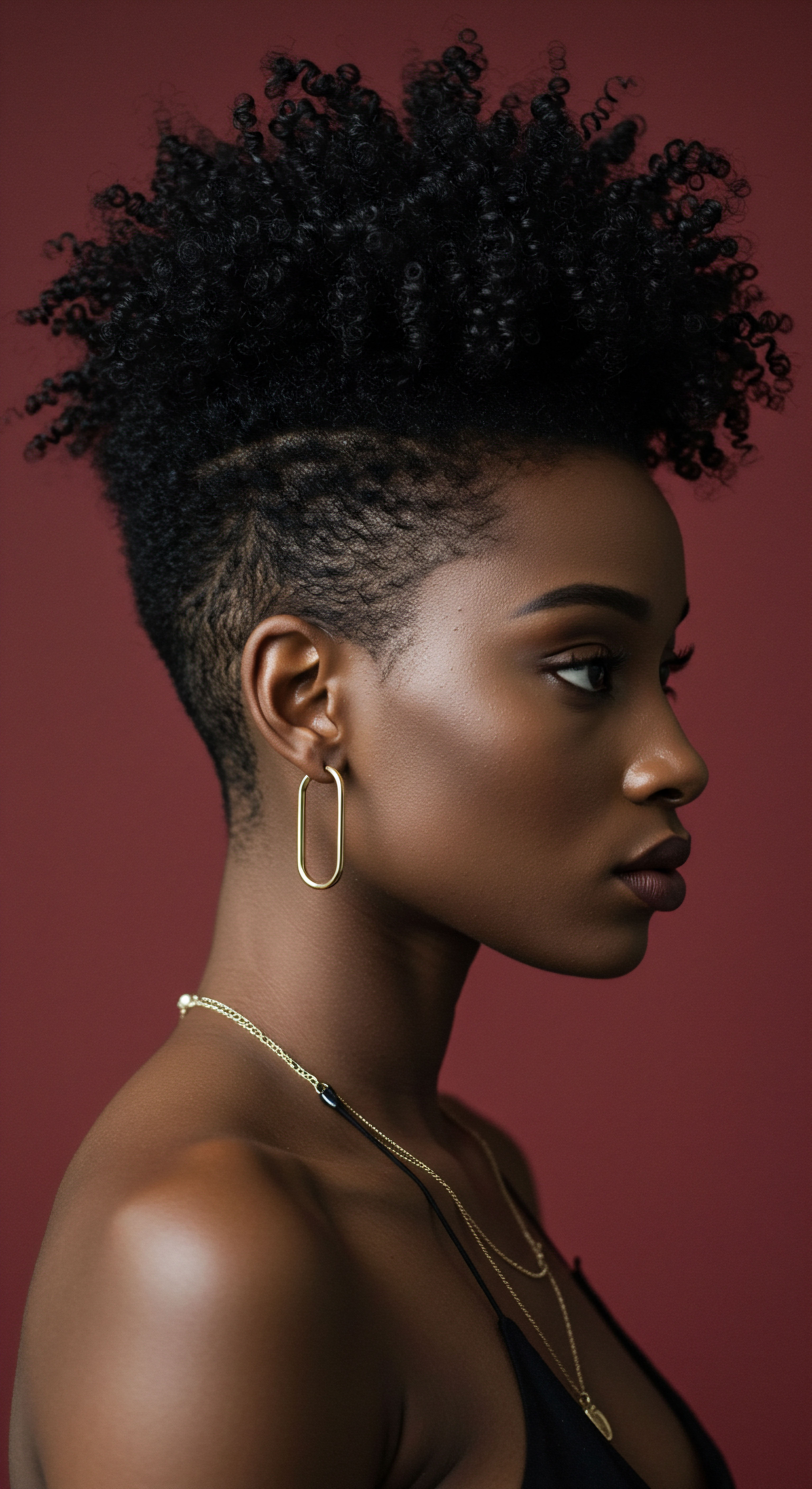
Long-Term Hair Health Implications for Textured Hair
The cumulative effects of hair coloring, especially with synthetic dyes, on textured hair demand careful consideration. The very process by which permanent synthetic dyes alter hair color involves a degree of structural disruption. The opening of the cuticle by alkaline agents and the oxidative lightening by peroxide can strip the hair of its natural lipids and proteins, leading to increased porosity, dryness, and a heightened risk of breakage over time.
Textured hair, already prone to dryness and fragility due to its coiled structure, is particularly susceptible to these effects. Repeated chemical processing can weaken the disulfide bonds that give hair its strength and shape, resulting in a loss of elasticity and increased susceptibility to damage.
A study published in 2024, “Comparative Study of Chemical vs. Natural Hair Dyes ❉ Safety and Efficacy,” notes that chemical hair dyes, while offering vibrant and long-lasting results, “raise significant safety concerns, including the potential for allergic reactions, scalp irritation, and long-term health risks, such as links to certain cancers.” The study also highlights that “Natural hair dyes, packed with botanical ingredients, are less damaging to your hair than their chemical counterparts. Unlike synthetic hair dyes that can strip the hair of its natural oils and proteins, natural hair dyes nourish your hair while changing its color. They coat the hair shaft, rather than penetrating it, which helps to maintain hair health.” This points to a tangible difference in long-term impact.
For textured hair, which already requires a thoughtful regimen to maintain moisture and prevent breakage, the choice of dye type significantly impacts its long-term resilience. Trichologists, who specialize in hair and scalp health, frequently encounter and treat issues arising from chemical damage, including texture problems and hair loss, underscoring the importance of informed choices. Opting for natural dyes, or carefully managing synthetic dye applications with robust pre- and post-care, becomes a strategic decision for preserving the integrity and vitality of textured strands over their lifespan.

Reflection
The nuanced discussion of hair dyes for textured hair ultimately circles back to a profound personal choice, one that balances aesthetic aspirations with a deep respect for the hair’s intrinsic nature and the broader world around us. It is a dialogue between vibrant expression and mindful preservation, where every shade chosen carries echoes of ancestral wisdom and whispers of future health. The path one walks in coloring textured strands is not merely about pigment; it is about honoring the unique journey of each coil and curl, recognizing its resilience, and tending to its delicate balance with warmth and knowledge. This thoughtful approach allows for a radiant self-expression that is truly rooted in well-being.
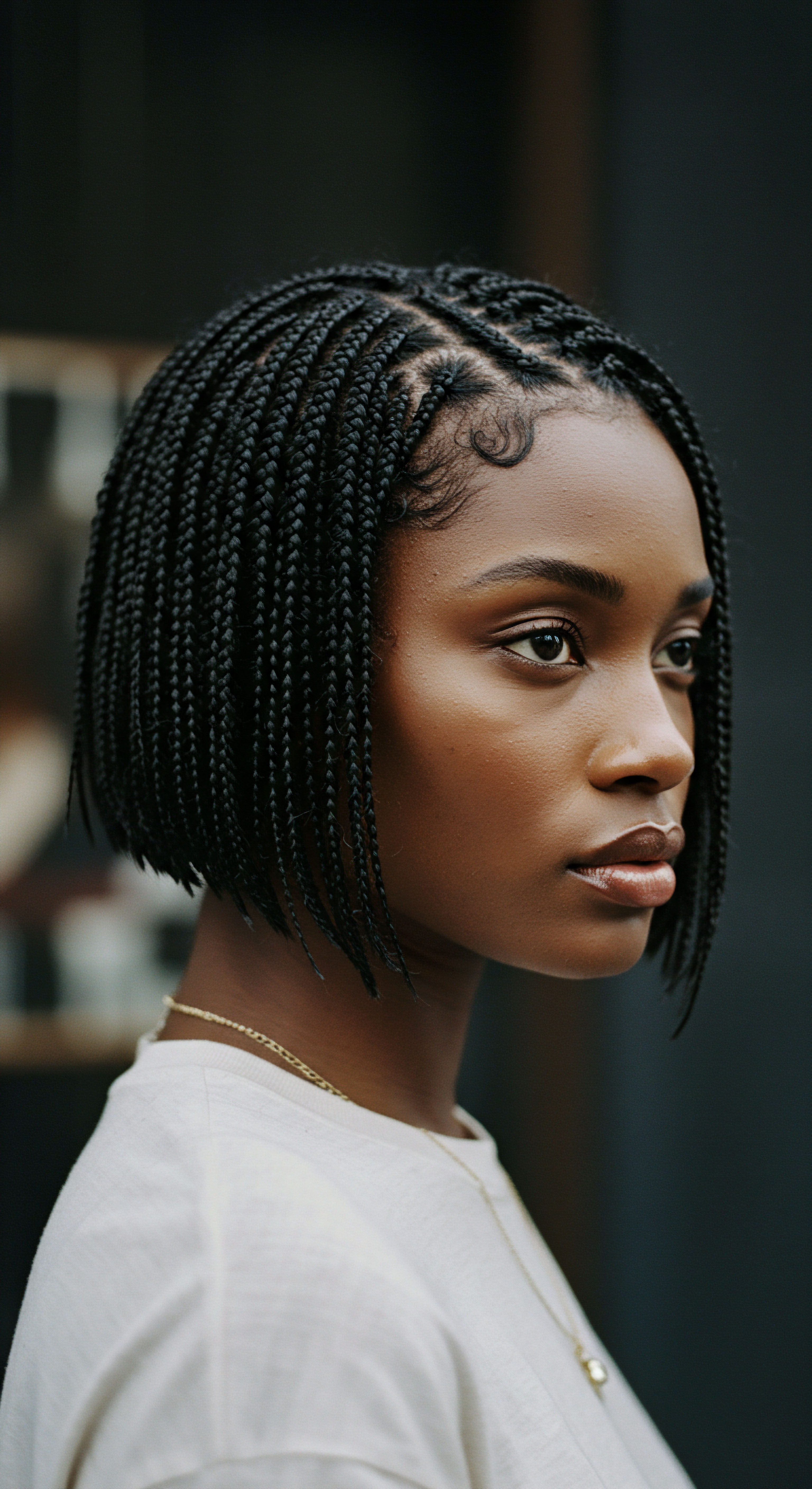
References
- Fouladkar, Manfred. “Comparative Study of Chemical vs. Natural Hair Dyes ❉ Safety and Efficacy.” J Cosmo Tricho 10 (2024) ❉ 272.
- Ghasemi, Masoumeh, et al. “Safety Considerations of Natural Plant Hair Dyes.” Molecules 27.22 (2022) ❉ 8062.
- Hall, Stuart. “Cultural Identity and Diaspora.” Identity, Community, Culture, Difference. Lawrence & Wishart, 1990.
- Khaled, M. “The Genomic Variation in Textured Hair ❉ Implications in Developing a Holistic Hair Care Routine.” MDPI (2024).
- Lee, Sang-Hoon, et al. “Mechanisms of impairment in hair and scalp induced by hair dyeing and perming and potential interventions.” Frontiers in Medicine (2023) ❉ 10.
- Patel, R. “Hair Porosity Affects Hair Colour.” The Shade.
- Pujari, R. “The Science Behind Natural Hair Dyes.” Anker Coiffeur.
- Rani, S. et al. “Isolation and Identification of Lawsonia Content from Leaves of Henna (Lawsonia inermis).” UMT Journals 7.2 (2023) ❉ 71-77.
- Robbins, C. R. Chemical and Physical Behavior of Human Hair. Springer, 2012.
- Rodgers, C. “Henna After Lamination? Lets Debunk.” The Brow Geek (2023).
- Sukumaran, R. “Is Henna Hair Dye a Bad Idea? Here’s What the Experts Have to Say.” Healthline (2021).
- Syed, T. A. et al. “Hair Cosmetics.” Indian Journal of Dermatology, Venereology, and Leprology 71.3 (2005) ❉ 159.
- Tangie. “Natural Hair Dyes ❉ How To Color Your Hair At Home?” Tangie (2025).
- The Institute of Trichologists. “What is Trichology.” The Institute of Trichologists.
- The Ohio Academy of Science. “How Hair Porosity Affects Hair Dye Results.” ProjectBoard.